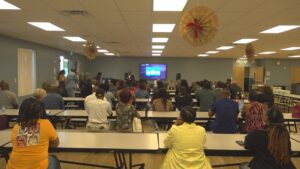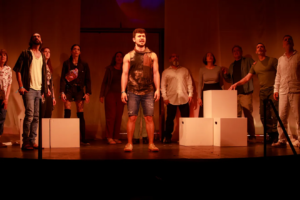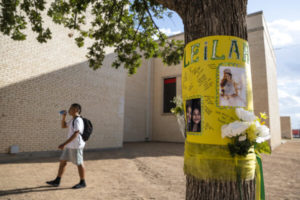It’s been nearly a year since the 150-year-old obelisk on the Santa Fe Plaza known as the Soldiers’ Monument was toppled by a crowd that gathered for what’s known here as Indigenous Peoples Day 2020.
But there still has been no formal process for public discussion of how Santa Fe should move forward from an incident which, depending on your point of view, was criminal vandalism of local history and culture by an ignorant mob abetted by police inaction, a righteous act of protest against genocidal wars waged on Native Americans or maybe just overdue remodeling of a traditional Spanish plaza that really should have a unifying gazebo or fountain as its centerpiece.
In 2020, after George Floyd’s killing by Minneapolis police sparked a national reckoning on race, Mayor Alan Webber supported removal of the obelisk, and initially suggested a Truth and Reconciliation Commission to try to heal Santa Fe’s own particular community divisions.
Since then, and after the unauthorized toppling of the obelisk and its panel that honored soldiers who fought “savage” Indians (although the word “savage” was chiseled out decades ago by an amateur editor), the mayor’s idea has morphed into CHART – the Culture, History, Art, Reconciliation and Truth Committee.
It’s taken months and months, but a consulting firm has been hired to work on the mediation and public outreach process, and the city has put out an open call for Santa Feans to become part of a paid project team to help lead CHART.
The urgency of getting started on this important work has been highlighted anew by recent vandalism at the Cross of the Martyrs, which honors 21 Franciscan friars killed in the 1680 Pueblo Revolt against the Spanish, and at the monument to Kit Carson, whose various exploits included a scorched earth campaign against Native people, that stands in front of the downtown federal building.
Again, there’s been shock, outrage and condemnation of vandalism as a way to express views. City Councilor Signe Lindell said the CHART process is the way forward, but added, appropriately, that she was also “saddened that this process is taking so long.”
It should be noted here that city officials continue to come across as clueless about what can happen as crucial dates approach during this era of racial reckoning.
There were protesters on and around the obelisk during the weekend before Indigenous Peoples Day last year. The monument had been vandalized earlier in the year. When Indigenous Peoples Day arrived, city workers were left to make a silly, last-minute and unsuccessful effort at building a barrier around the spire as the protesters fought to keep that from happening.
And red paint on the Cross of the Martyrs? It’s happened so often over the years during the days of August around the Pueblo Revolt’s anniversary and leading up to Indian Market that it’s almost earned a spot on Santa Fe’s calendar of cultural events. If the semi-regular vandalism merits condemnation as hate and desecration of a sacred site, then it’s significant enough to also merit staking out the cross for protection.
It’s taken too long to get a reconciliation process up and running. Webber signed an “emergency” proclamation back in June 2020 that called for the formation of a Truth and Reconciliation Commission to make recommendations about the future of the city’s statues and monuments.
But the bottom line is that it’s good that a belated public discussion is about to finally begin on how Santa Fe’s various cultures can continue to work and live together, as they have for centuries and usually do today; acknowledge hard truths from the past; and somehow eschew divisive spasms of anger and conflict.
What’s in store? The city’s contract to oversee CHART is the Artful Life organization, founded by former Santa Fe poet laureate Valerie Martinez with the goal of creating “transformational change through the beauty and power of creative collaboration.”
“The goal of CHART is to foster mutual understanding or shared values of diverse backgrounds,” Martinez told the Journal North by email. “We will be doing this by offering smaller and larger community gatherings, surveys, one-on-one interviews, ‘art activations,’ a cultural history series, and more.”
Some of that may sound a bit soft and mushy – can we expect members of the traditional heritage group Union Protectiva de Santa Fe, which has filed suit to try to get the obelisk restored, to show up at an “art activation?” But there’s no standard blueprint for approaching this kind of cultural reconciliation effort. Let’s see how this one plays out.
It’s certainly past time for the process to begin. The status quo is not solving anything and just allows conflict to simmer.
The only way CHART will succeed, or at least make progress, is for people from all factions, all parts of the community, to participate. It’s worth a try.




